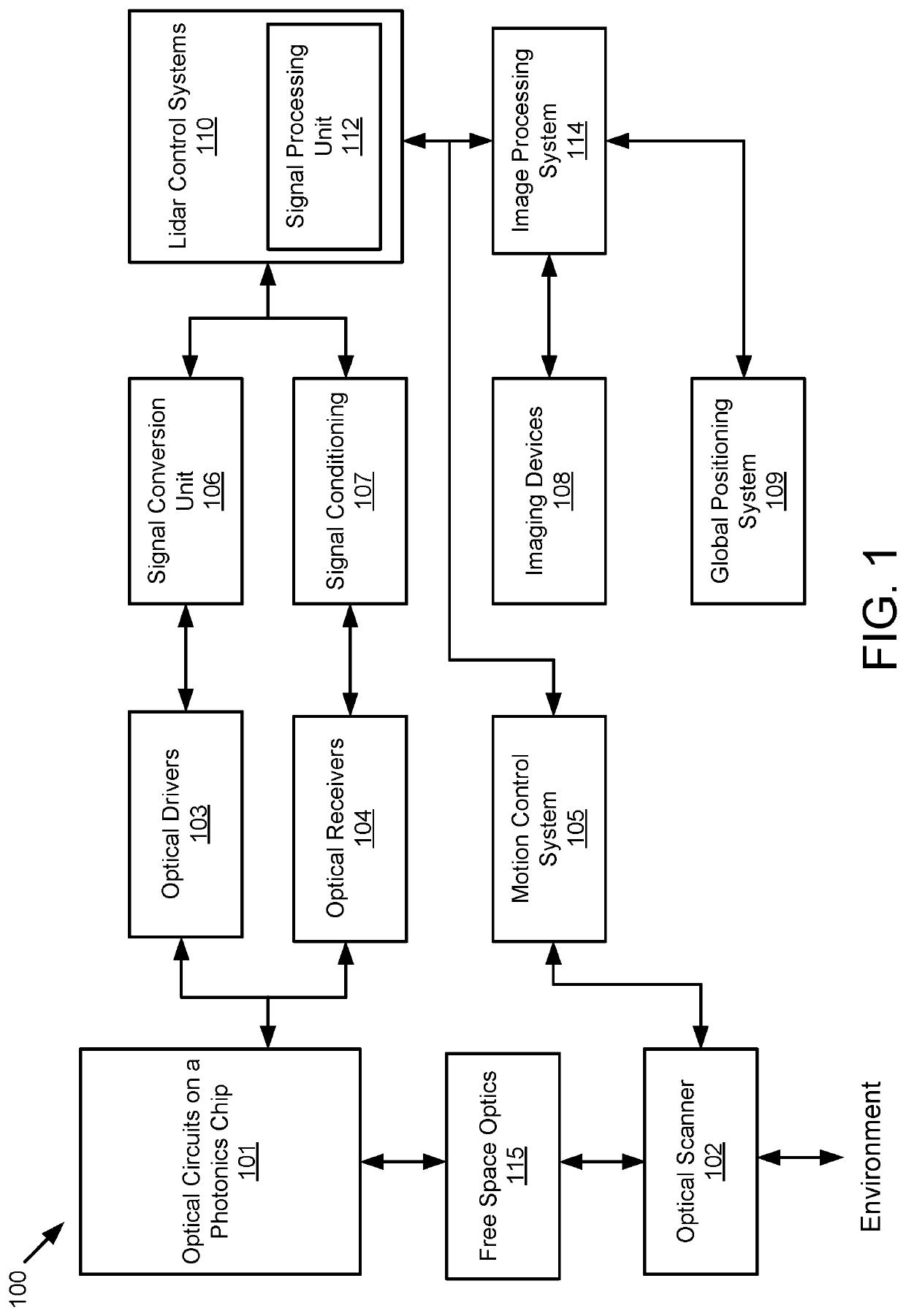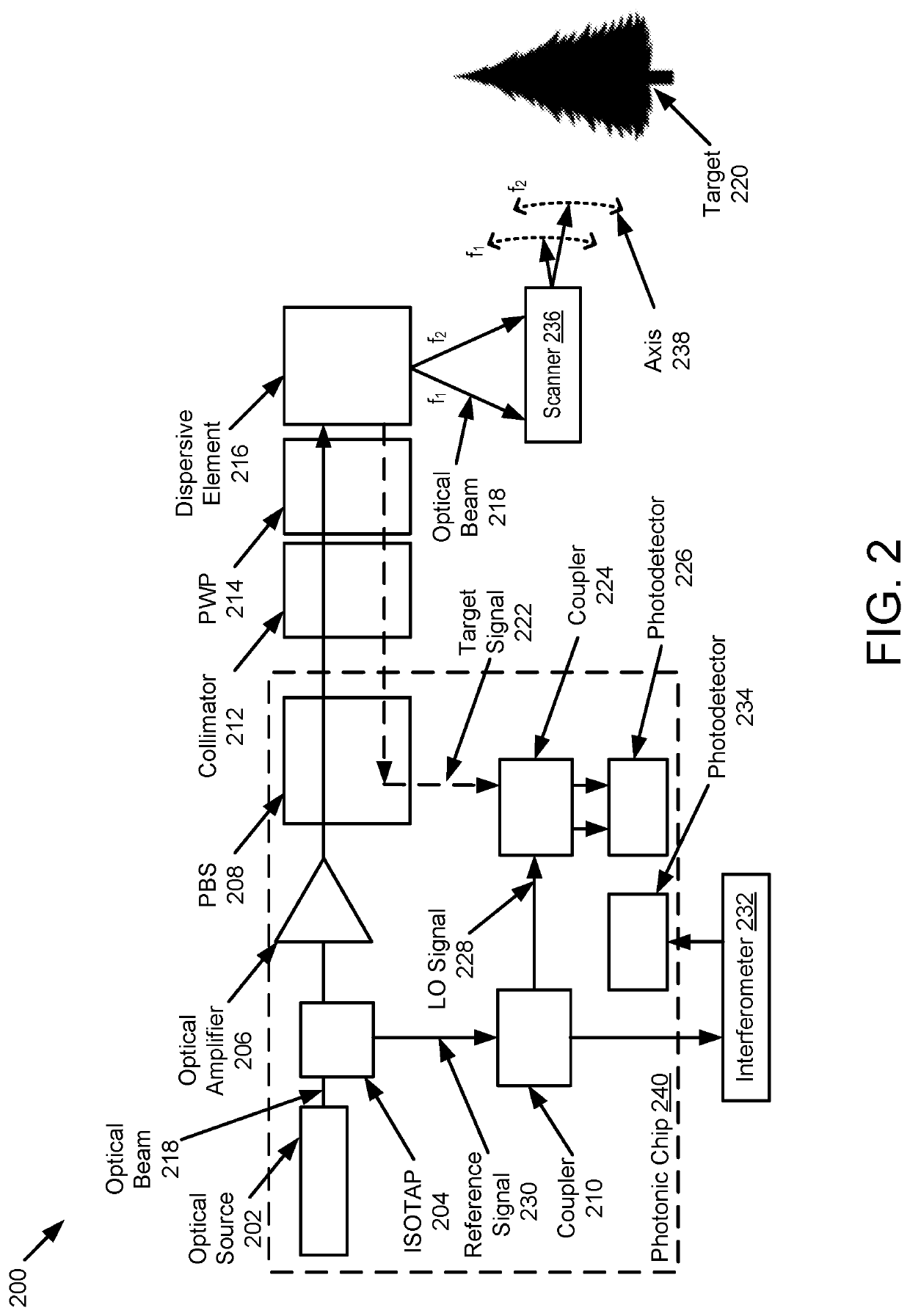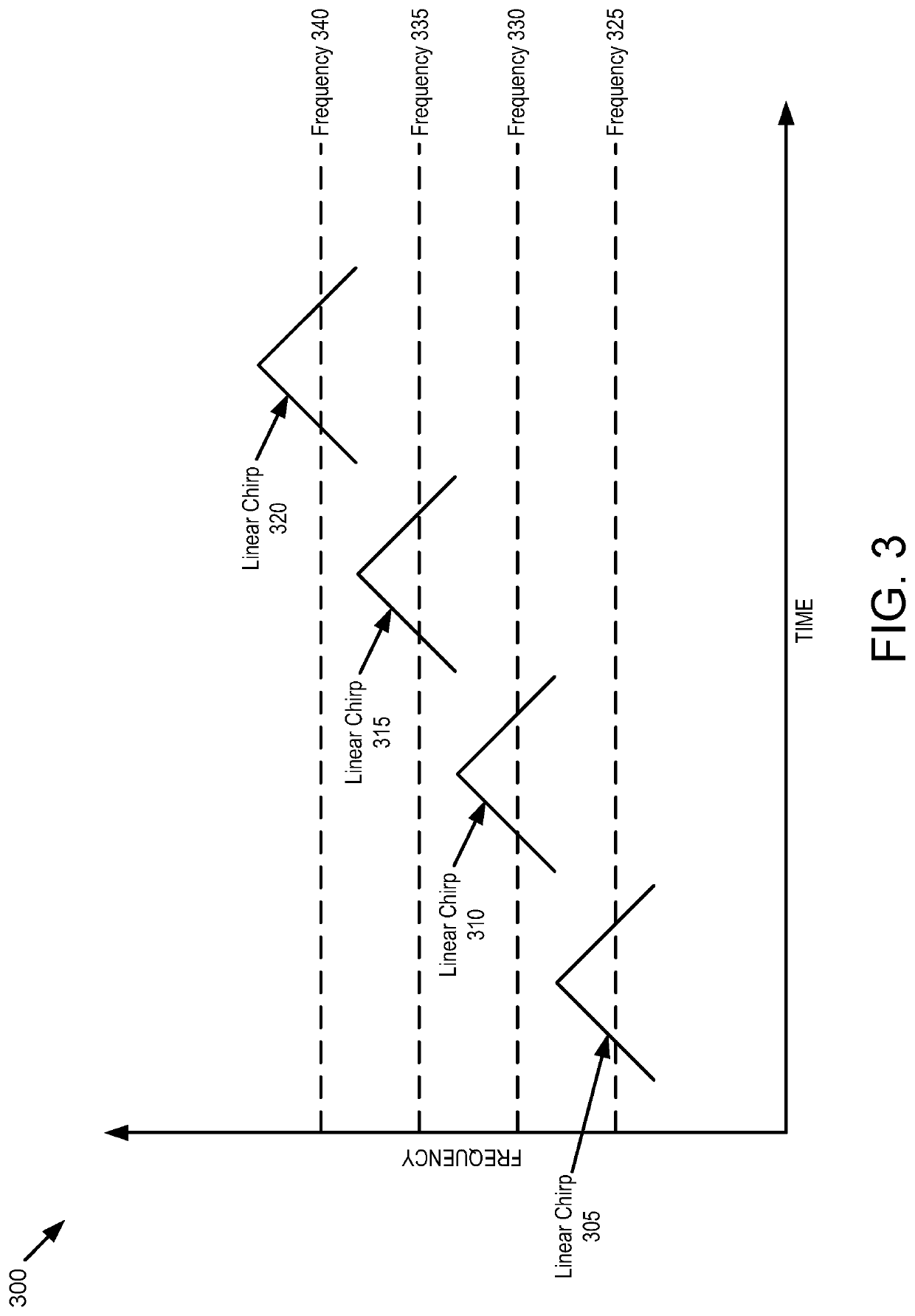Lidar system with solid state spectral scanning
a solid-state spectral scanning and detector technology, applied in the field of light detection and range (lidar), can solve the problems of reducing coupling efficiency and severely degrading target signals from distant objects
- Summary
- Abstract
- Description
- Claims
- Application Information
AI Technical Summary
Benefits of technology
Problems solved by technology
Method used
Image
Examples
Embodiment Construction
[0019]Example implementations of the present disclosure are directed to an improved scanning LIDAR system. Example implementations of the present disclosure are based on a type of LIDAR that uses frequency modulation (FM) and coherent detection to overcome the shortcomings of traditional LIDAR systems and the limitations of prior FM LIDAR systems. Historically, FM LIDAR systems suffer from significant losses in the beam's return path; thus, such systems, which are often quite bulky, require a higher average beam output power to measure distances comparable to time-of-flight (TOF) LIDAR systems. However, the range is limited by the operating distance for eye-safe output powers.
[0020]Example implementations of the present disclosure are configured to simultaneously measure the range and velocity, using coherent detection and having the added benefit of immunity to crosstalk from other LIDAR systems. Other implementations may be used with incoherent systems to improve, range, frame rat...
PUM
 Login to View More
Login to View More Abstract
Description
Claims
Application Information
 Login to View More
Login to View More - R&D
- Intellectual Property
- Life Sciences
- Materials
- Tech Scout
- Unparalleled Data Quality
- Higher Quality Content
- 60% Fewer Hallucinations
Browse by: Latest US Patents, China's latest patents, Technical Efficacy Thesaurus, Application Domain, Technology Topic, Popular Technical Reports.
© 2025 PatSnap. All rights reserved.Legal|Privacy policy|Modern Slavery Act Transparency Statement|Sitemap|About US| Contact US: help@patsnap.com



